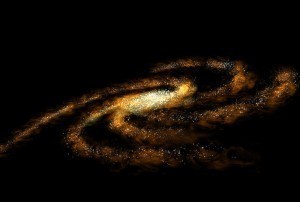What is the Size of Our Galaxy?
The galaxy where our very own Solar System is found is called Milky Way Galaxy. It is a section of the Local Group of galaxies and its type is known as a barred spiral galaxy. Our galaxy is just one of the billions of its kind that we can observe in the universe.
Local Group of galaxies and its type is known as a barred spiral galaxy. Our galaxy is just one of the billions of its kind that we can observe in the universe.
The name Milky Way Galaxy is actually an English translation of its Latin counterpart ‘Via Lactea’. And it is also translated from the Greek word ‘Galaxias’ that pertains to the pale band of light that the galactic plane created as seen by us here on Earth.
The Size of the Milky Way Galaxy
The entire stellar disk of our galaxy is estimated to have a diameter of 100,000 light-years. The thickness of the Milky Way Galaxy is considered to be approximately 1,000 light-years. The number of stars within the galaxy is estimated to range from 200 billion to 400 billion. We can never tell the exact number of stars because there are billions of very low-mass stars that are unaccounted yet. These very low-mass stars can be likened to the one trillion number of stars belonging to our neighbor galaxy, the Andromeda Galaxy. Outside the range of the stellar disk of Milky Way Galaxy is a very thick disk of gas. Recent researches show that this thick disk of gas outside our galaxy has an estimated thickness of about 12,000 light-years.
The Galactic Halo of the Milky Way Galaxy is extending outward but its size is actually limited due to the orbits of the Small and Large Magellanic Clouds known to be the two satellites of the galaxy. The perigalacticon of these two satellites is estimated to be at 180,000 light-years. Within this estimated distance and even farther, majority of the halo objects orbits will be interrupted by these Magellanic Clouds thus resulting to their ejection from the proximity of the Milky Way Galaxy.
There are recent assessments made by the Very Long Baseline Array or VLBA which shows that our Milky Way Galaxy is pretty much heavier compared to previous measurements made. Our very own galaxy now has a mass that is estimated to be the same to that of our neighbor galaxy, the Andromeda Galaxy. Through the use of the VLBA, the perceptible shift of distant star-forming regions in times when the Earth is positioned on the opposite edges of the Sun is being measured. Through this method, measuring the distance to these regions is quite accurate with the use of fewer hypothesis compared to previous attempts.
With this more accurate and latest measurements, the Milky Way Galaxy is estimated to have a rotational speed of 254 kilometers per second. This indicates that our galaxy has an estimated total mass of about three trillion Suns in equivalent.





